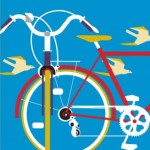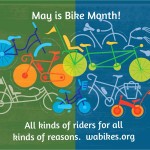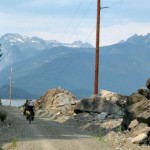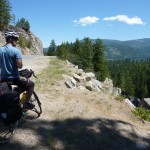“Slow Down and Save Lives” bill would help protect pedestrians and cyclists
Representative Cindy Ryu, D-Shoreline, last week introduced traffic-safety legislation that would help protect pedestrians and cyclists by allowing cities to set lower speed limits in residential and business districts.
The legislation, known as House Bill 1217, is one of Washington Bikes’s top 2011 legislative priorities. The concept for the bill was developed by the Bike Alliance’s legislative and statewide issues committee, which also helped draft the legislation.
The bill has already attracted several co-sponsors from both sides of the aisle. In addition to Rep. Ryu, they include Rep. Jamie Pederson, D-Seattle; Rep. Norm Johnson, R-Yakima; Rep. Brad Klippert, R-Kennewick; Rep. Marcie Maxwell, D-Renton; Rep. Fred Finn, D-Thurston County; Rep. Phyllis Gutierrez Kenney, D-Seattle; Rep. Sharon Tomiko Santos, D-Seattle; Rep. Larry Springer, D-Kirkland; Rep. Connie Ladenburg, D-Tacoma; Rep. Sherry Appleton, D-Poulsbo; Rep. Marko Lilas, D-Edmonds; Rep. John McCoy, D-Tulalip; Rep. Mark Miloscia, D-Federal Way; and Rep. Joe Fitzgibbon, D-Burien.
Under HB 1217, local jurisdictions would be able to set blanket 20 mile-per-hour speed limits on non-arterial streets in residential and business areas. Under current law, authority to set 20 mph speed zones is extremely limited, and outside of school zones may normally be done only after an engineering and traffic study has been conducted.
Twenty-mile-per-hour (or 30 k/hr) zones are widespread in European cities, where studies have proven their effectiveness at saving lives. British researchers concluded that 20 mph zones in London had saved 200 lives a year there. In addition, 20 mph zones reduce cyclist injuries by 17 percent, the researchers said.
The reason is simple physics: all other things being equal, both stopping distance and force of impact increase as the square of speed. A vehicle traveling at 40 mph will strike a pedestrian with four times more force than a vehicle traveling at 20 mph. Statistics from Britain illustrate what this means for deaths and serious injuries in car-pedestrian collisions:
Twenty-mile-per-hour zones would be a simple and significant step to help increase the safety of the most vulnerable road users. Please contact your legislators and let them know that you support the bill. And for updates on bicycle-related legislation, see the legislation and advocacy section of the Bike Alliance web page.





2 Comments
Having a 20 mph speed limit on side streets would be nice. The risk/reward ratio is too skewed now for scofflaw motorists to obey existing speed limits, and there's a general lack of understanding of why the limits are important to vulnerable road users. So what would be even better would be education that would lead to voluntary compliance with the existing laws. Then, we could look to greater enforcement of existing law when education is not effective.
The same applies to many bicyclists. They ignore, routinely, the rules of the road because they can, endangering themselves and the motoring public. They bicycle on and off the sidewalks onto streets at will. On numerous instances I have seen bicyclers moving agaist traffic on oneway streets. I downtown Seattle. This is not a matter of physics it is a matter of common sense and too many bicyclists do not exercise it.
One Trackback
[…] 20 is plenty. Graphic:Washington Bikes […]